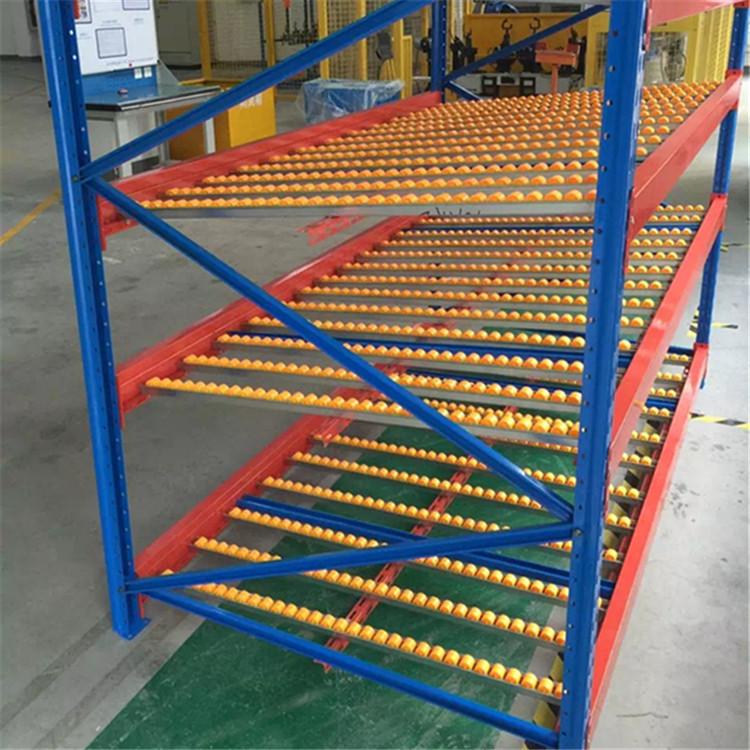In today's fast-paced industrial and commercial environments, efficient storage systems are crucial for maximizing space, improving productivity, and reducing operational costs. Racking and shelving play a pivotal role in organizing warehouses, retail spaces, and facilities worldwide. Whether you're managing a small business or a large distribution center, understanding the nuances of racking and shelving can transform your storage strategy. This article delves into the essentials of racking and shelving, covering core comparisons, practical applications, supplier selection, cost considerations, and technological advancements. By the end, you'll have a comprehensive grasp of how to leverage these systems effectively, including insights into reputable brands like Guangshun.

Racking and shelving are often used interchangeably, but they serve distinct purposes in storage solutions. Racking typically refers to heavy-duty systems designed for palletized goods in warehouses, utilizing structures like selective, drive-in, or push-back racks to handle bulky items. In contrast, shelving involves lighter, modular units ideal for smaller items in retail or office settings, such as boltless or wire shelving. The primary difference lies in load capacity and design: racking systems can support thousands of pounds per level, while shelving is suited for organized, accessible storage of lighter products. Understanding these distinctions helps in selecting the right system for your needs, as misapplication can lead to inefficiencies or safety hazards. For instance, in a logistics setup, racking and shelving might be combined to optimize both bulk and item-level storage, enhancing overall workflow.
The applications of racking and shelving span various industries, from manufacturing and retail to healthcare and agriculture. Racking is commonly used in warehouses for high-density storage, enabling forklift access to pallets, which boosts inventory turnover. Shelving, on the other hand, excels in environments like libraries, supermarkets, or workshops where easy access to smaller items is key. When choosing between racking and shelving, consider factors such as load requirements, space availability, and accessibility. For heavy, palletized goods, opt for racking systems like cantilever or pallet racking. For lighter, diverse items, shelving options like gondola or mobile shelving are more appropriate. Always assess your inventory flow and safety standards to ensure the system aligns with operational goals, as improper selection can result in wasted space or increased handling times.
Selecting reliable commercial services and suppliers for racking and shelving is essential for quality and durability. Start by researching providers who offer customized solutions, installation, and maintenance support. Look for companies with certifications, positive customer reviews, and a track record in your industry. For example, Guangshun is a notable brand known for its robust racking and shelving systems, catering to diverse sectors with innovative designs. When sourcing suppliers, evaluate their product range, warranty terms, and after-sales service. Attend trade shows or use online platforms to compare offerings, and consider local distributors for faster delivery. Building a partnership with a trusted supplier ensures long-term reliability and can lead to cost savings through bulk purchases or tailored packages.
The cost of racking and shelving varies widely based on material, design, and customization. Basic shelving units might start at $50 per unit, while high-end racking systems can exceed $10,000 for large installations. Key factors influencing price include material type (e.g., steel for durability vs. wood for affordability), load capacity, and additional features like anti-corrosion coatings. Installation, maintenance, and transportation costs also add to the overall expense. To manage budgets, compare quotes from multiple suppliers, including brands like Guangshun, which often offer competitive pricing without compromising quality. Investing in durable racking and shelving can yield long-term savings by reducing replacement frequency and improving operational efficiency, making it a wise financial decision for businesses.

Advancements in technology have revolutionized the manufacturing of racking and shelving, enhancing durability, safety, and customization. Modern processes involve computer-aided design (CAD) for precise engineering, followed by robotic welding and powder coating to ensure strength and resistance to wear. Innovations like adjustable beam heights and modular components allow for flexible configurations, adapting to changing storage needs. Brands like Guangshun incorporate lean manufacturing techniques to minimize waste and optimize production, resulting in eco-friendly and cost-effective solutions. Understanding these technologies helps buyers appreciate the value behind their investment and ensures they select systems that meet evolving industry standards, such as those for seismic resistance or automated retrieval.
Q1: What is the main difference between racking and shelving?
A1: Racking is designed for heavy, palletized loads in industrial settings, often requiring forklift access, while shelving is suited for lighter, smaller items in retail or office environments, focusing on easy manual access.
Q2: How do I determine the right racking and shelving for my business?
A2: Assess factors like load weight, space dimensions, accessibility needs, and budget. Consult with experts or suppliers, such as Guangshun, to conduct a site analysis and recommend tailored solutions.
Q3: Are there any safety standards to consider when installing racking and shelving?
A3: Yes, adhere to standards like OSHA guidelines or ISO certifications to ensure structural integrity. Regular inspections and proper load distribution are crucial to prevent accidents.
Q4: What are the typical costs associated with racking and shelving systems?
A4: Costs range from $50 for basic shelving to over $10,000 for advanced racking, depending on materials, customization, and installation. Get multiple quotes to find a balance between quality and affordability.
Q5: Can racking and shelving be customized for specific needs?
A5: Absolutely. Many suppliers, including Guangshun, offer customization options in size, color, and configuration to fit unique storage requirements, enhancing efficiency and space utilization.
In conclusion, racking and shelving are indispensable for modern storage management, offering versatile solutions across industries. By understanding their differences, applications, and associated costs, you can make informed decisions that boost productivity and reduce expenses. Always partner with reputable suppliers like Guangshun to ensure quality and reliability. For more insights, explore additional resources or consult professionals to tailor these systems to your specific needs.
 Wechat
Wechat
 Whatsapp
Whatsapp